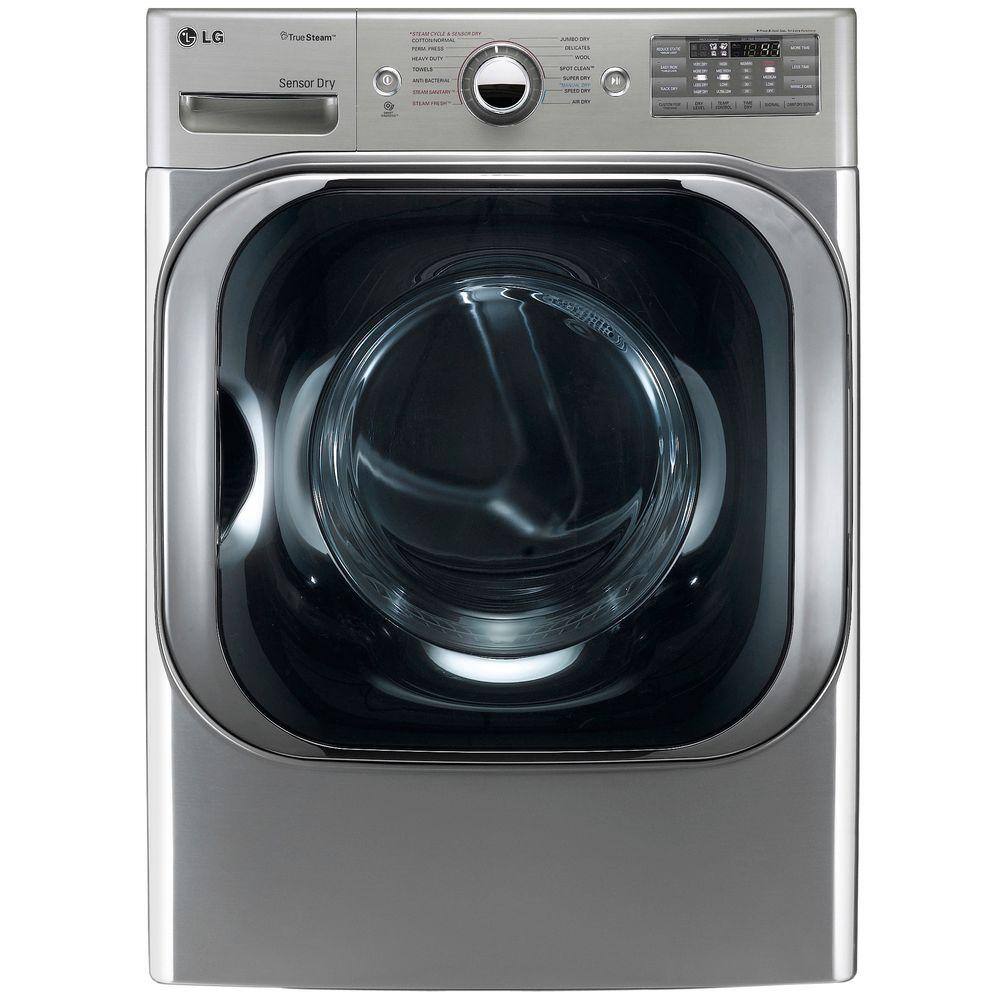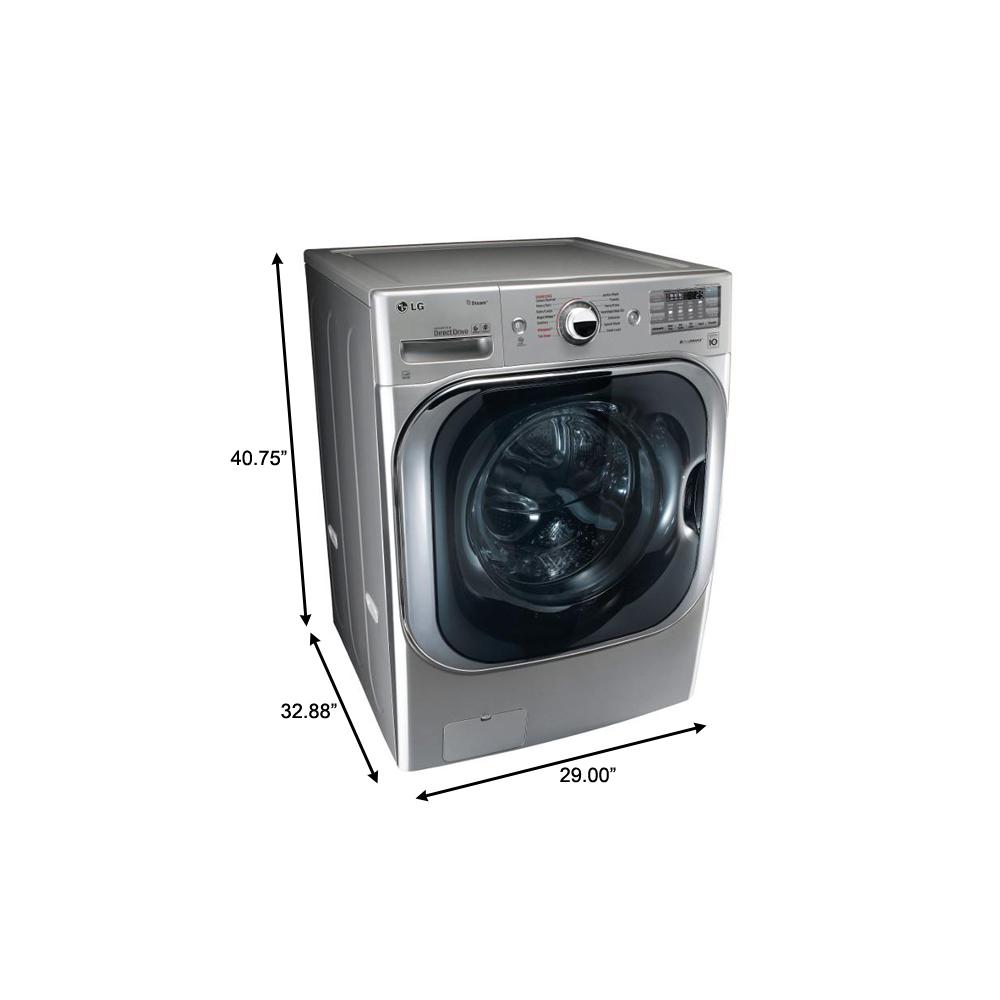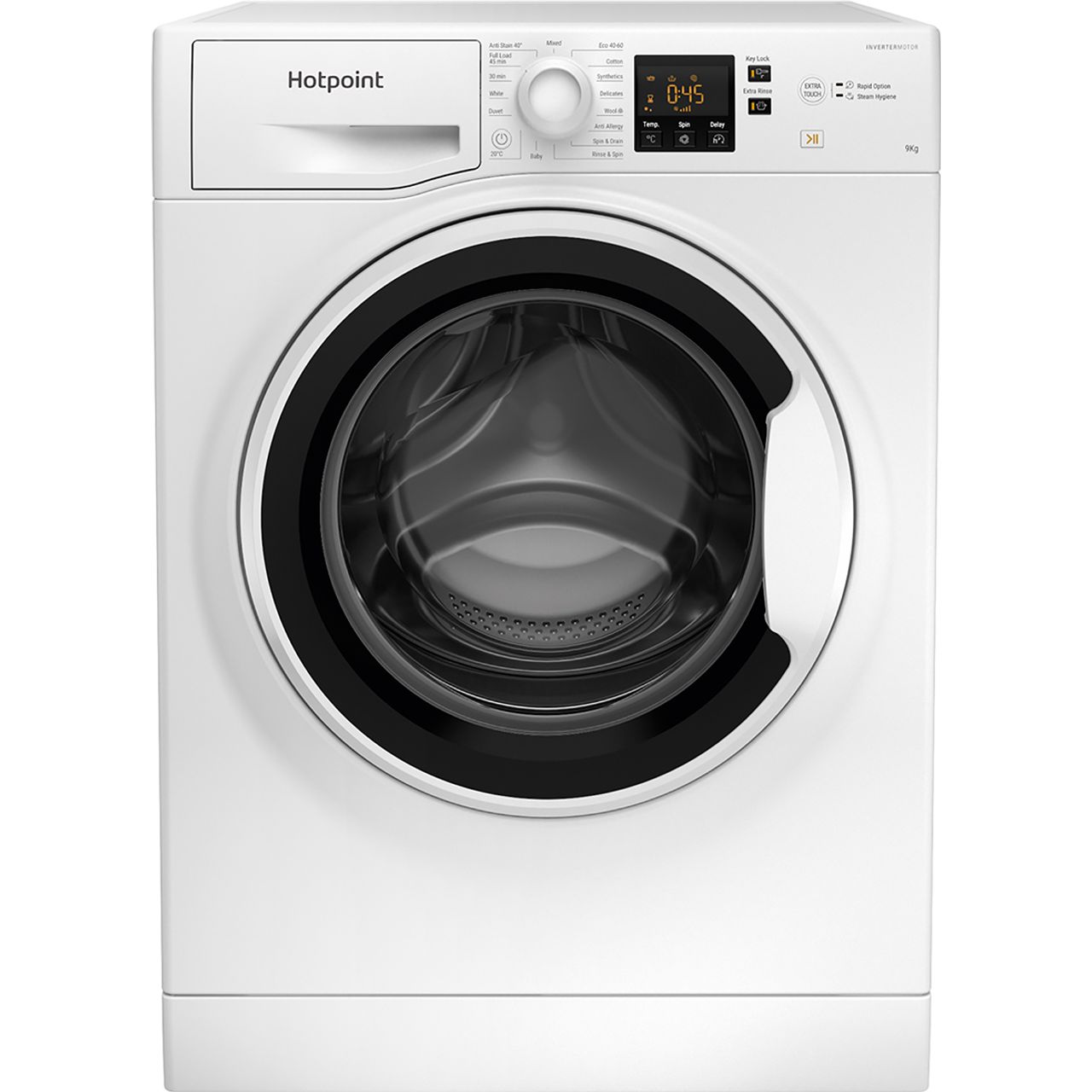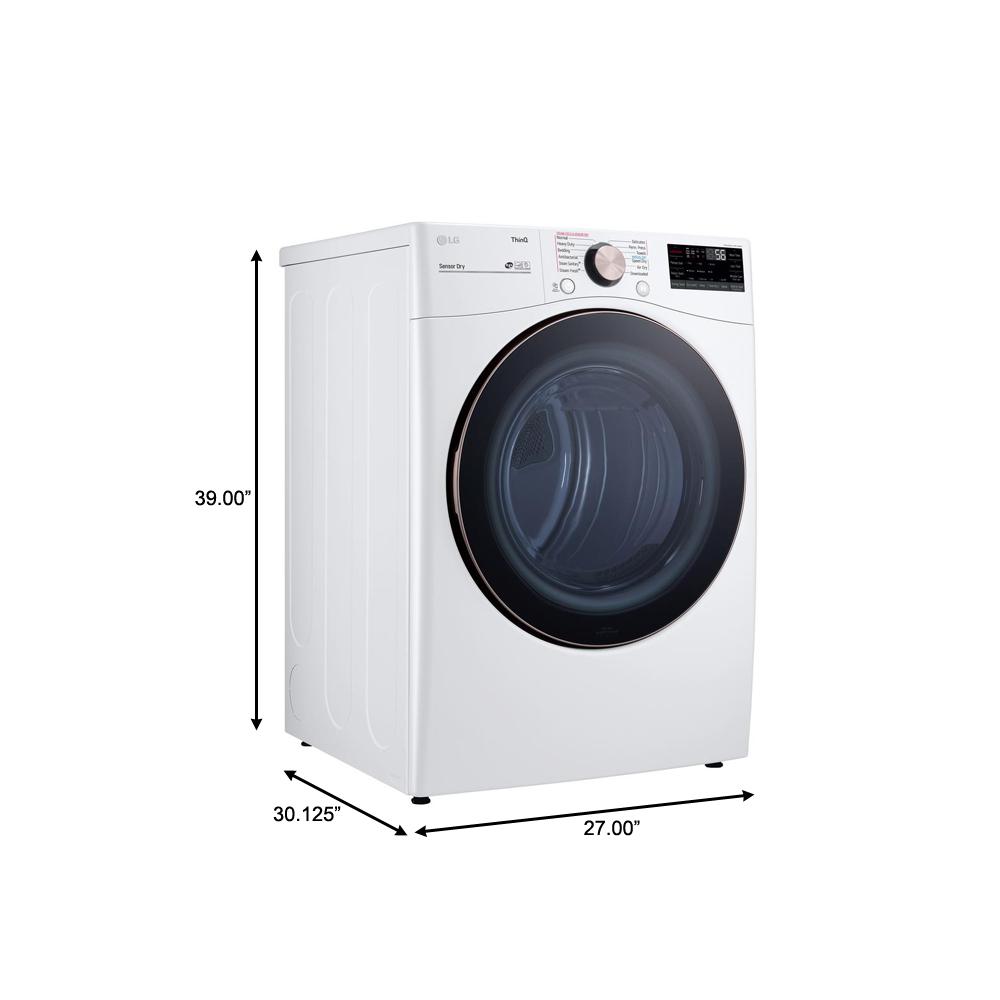LG 9.0 cu. ft. Stackable Electric Dryer with TrueSteam, SteamFresh and Pedestal Compatible in Graphite Steel
Dryer fits king-size comforter & full set of bedding in one load. Electric Dryer pairs best with LG WM8100HVA Washer. TrueSteam creates real steam to reduce wrinkles, odor, & ironing.
LG’s Mega Capacity 9.0 cu. ft. Steam Dryer performs big enough for your most ambitious loads. Smart enough to make sure everything dries perfectly with 14 drying programs, including, Steam Fresh, Steam Sanitary, Wool, Speed Dry, Air Dry and Super Dry. Steam technology reduces wrinkles and odors and practically eliminates the need for ironing. Optimum drying time is continuously monitored with the Sensor Dry system. Beautiful.
- 14 drying cycles with sensor dry: Cotton/normal, perm. Press, towels, delicates, heavy duty, steam fresh, steam sanitary, spot clean, anti-bacterial, jumbo dry, wool, super dry; manual dry cycles: speed dry and air dry
- 9.0 cu. ft. of capacity to accommodate the largest loads, such as a king size comforter and full set of bedding in a single load
- Intelligent electronic control panel with dual LED display and Dial-A-Cycle makes it easy to find the right setting for each load
- Our sensor dry system measures the moisture levels during the cycle and automatically adjusts the drying time, assuring you get dry laundry every time, LG’s speedDry cycle can get clothes dry in just 15 minutes or just pop your dry clothes in for a tumble on the wrinkle care cycle to reduce creases
- Got a small stain or spot? Our SpotClean Cycle is designed to use the power of steam to effectively remove stains and freshen clothes right in the dryer.
- True steam technology generates real steam to reduce wrinkles and odors, practically eliminating the need for ironing
- The SteamFresh cycle refreshes and reduces wrinkles in up to 5 garments at a time with one, 20 -minute dryer cycle
- SteamSanitary Cycle safely sanitizes items marked as non-washable
- Say so long to static, The ReduceStatic option virtually eliminates static cling by lightly moistening clothes to make ironing easier and more efficient
- The easy iron option virtually eliminates static cling
- If you ever experience an issue with your LG dryer, you don’t have to worry. The SmartDiagnosis feature helps the service center diagnose problems over the phone, or with a simple app on your smart phone, helping you minimize costly, inconvenient service calls
- FlowSense lets you know when your ducts need cleaning to avoid lint buildup, improves the dryer’s performance for greater efficiency and lower utility bills and gives you safer, worry-free operation with fewer service calls
- Can be stacked with a matching washer using a stacking kit (sold separately) or placed side by side on optional pedestals (sold separately)
- Dryer Duct and electrical cords are required for installation and will be offered separately during appliance checkout
- NeveRust Aluminized Alloy Steel drum is durable and built to last
- Inverter DirectDrive Motor is backed by a 10-year limited warranty
- Pedestals sold separately; use compatible pedestal WDP5V
- Stacking Kit sold separately; use compatible stacking kit KSTK2
- All compatible LG washers, dryer, SideKick pedestal washers, and laundry pedestals sold separately.
Additional information
| Depth With Door Open 90 Degrees (In) | 59 |
|---|---|
| Door Opening Height x Width (In.) | 16.93 x 16.93 |
| Product Depth x Height x Width (in.) | 32.1 40.8 x 29 |
| Certifications and Listings | CSA Listed |
| Manufacturer Warranty | 1 Year Parts and Labor |






by Richard
Have always liked LG products.
by Elaine
I love how big this washing machine is! I can fit a larger than king size comforter in it no problem! Quick wash cycles. Easy to use interface. I’m a fan.
by John
By far the best LG washer and dryer I’ve owned. I am loving the larger size and color is nice too.
by Karen
Machine is excellent and delivery setup was also excellent! We are in an old house and nothing ever goes according to plan.
by Mindy
It’s huge! I love it’s big size!
by Rick
Tide pods don’t work in the drawer, where the liquid goes.